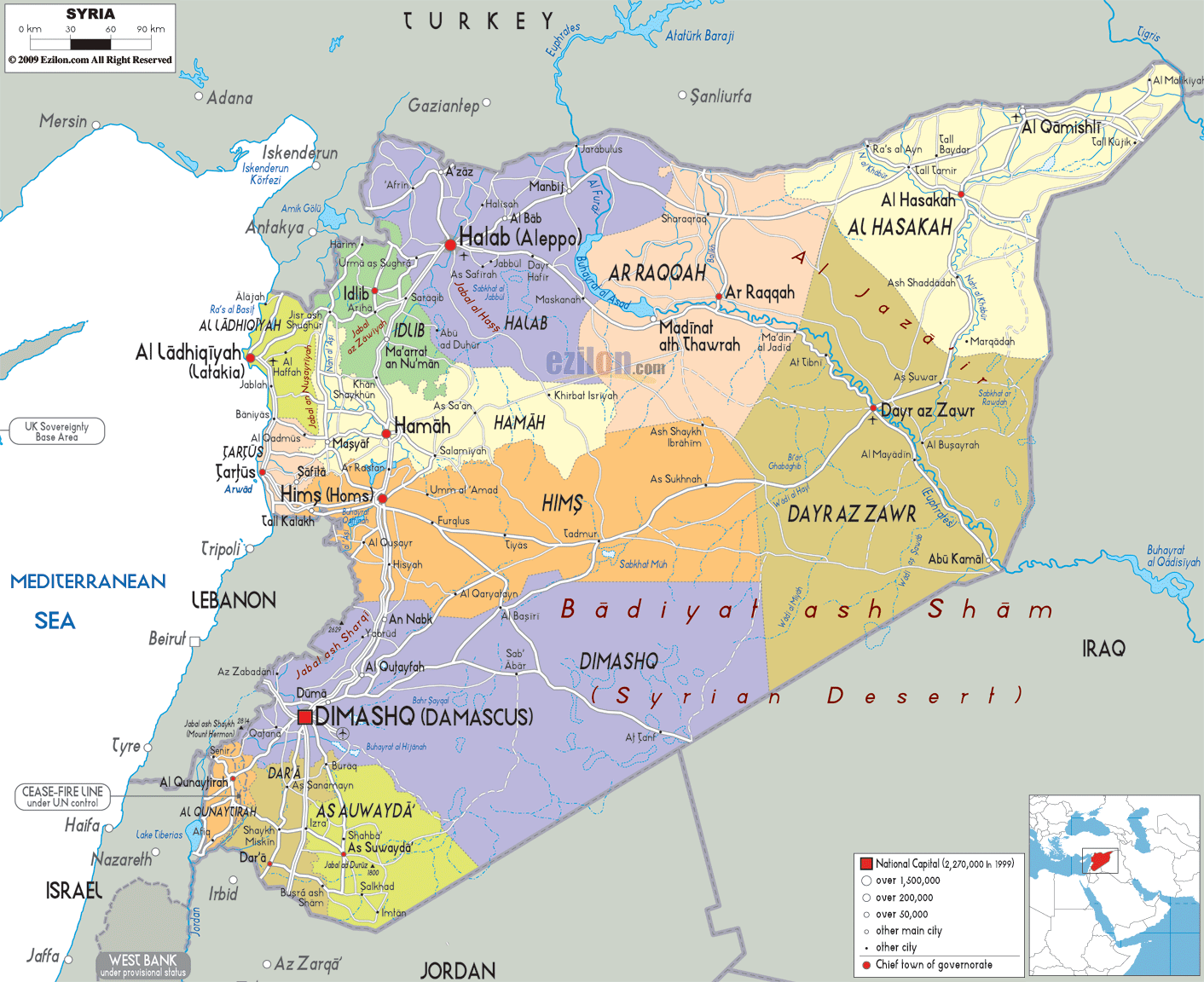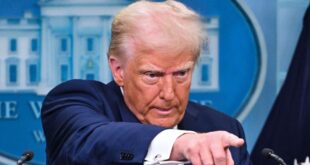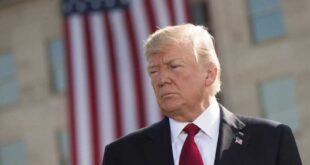It is amazing to see the focus of conflicts and potential conflicts in Syria jumping here and there like a drop of mercury on glass. At one point, it is Assad against his opponents, then it is the Arabs and the Iranians, then the Russians and the non-terrorist opposition, then it is Saudi Arabia and Russia, then the US and Russia, then Ankara and Moscow, then it is the Kurdish PYD and the Arabs, then it is Turkey and the Kurds, and it ain’t over yet.
In this bloody roller-coaster, and in order to detect “the meaning” and “the trends” of the breathtaking events, it may help to analyze the major elements of the picture in the form of questions and answers:
* The Syrian opposition is losing grounds under relentless attacks by the Assad forces, Iranian militias and Russian air raids. Where exactly are the major elements of risk in the current power play?
– President Putin and President Obama talked by phone last weekend. According to the White House, President Obama “emphasized the need to organize close working relations to combat ISIL”.
The emphasis on coordination between the US and Russia is obviously positive in order to avoid a much bigger war. But while the two sides try to frame their engagements in a coordinated way, the ball keeps rolling down to different spots restlessly. This may place any military coordination between Moscow and Washington under increasing pressures.
The fire ball now rolls almost in all directions in a dizzying scene. What if the Turks, members in NATO, shot another Russian plane that crossed their skies? What if Syria’s air defenses shot a Coalition plane that happened to belong to Saudi Arabia? What if the PYG continued their advance to connect their area in the North West to that in the North East, a move that will give them full control of the borders with Turkey which will pressure the Turkish military to act inside Syria?
The Turks already started shelling Kurdish positions there. Next escalation will be for the Turks to cross the borders. In fact, Damascus says they already did, though Ankara denies. Yet, the Turks allowed hundreds of Syrian opposition fighters to cross Turkey’s borders from Idlib then re-enters Syria to reinforce their besieged comrades in other areas. If the Turks enter Syria, they will be targeted by the Russians. That is to say that Moscow would be hitting the forces of a NATO member.
No bilateral coordination like the one between the US and Russia can insulate itself from the developments occurring all over the place around it. What we see before our eyes now is a situation where the one line of “coordination” between Washington and Moscow is constantly hit by the hammers of the avalanche that is going on around it.
Both NATO and the US told Erdogan in frenzy calls that NATO does not approve of any Turkish escalation in its conflict with Russia. Erdogan responded publicly. “But who is a NATO ally? Turkey or the PYD?” he said. The worrying factor here is that nobody can predict President Erdogan moves.
Another risk is coming from the nature of the evolvement of the conflict. This conflict is quickly enlarging itself and providing us with a multiple agenda war. In other words, the conflict in Syria is not Syrian anymore. It is metamorphosing into a quest to achieve Kurdish national rights (and a bit more), a drive to expand Russia’s influence in the Middle East, an attempt by the Arabs to prevent Iranian expansion in their region, a war against terrorism, a revolt against a dictator and a shot from a hesitant administration in Washington to preserve whatever it still enjoys of interests and influence in the strategically vital region.
This is a major risk. If the mono-focus conflict splits itself the way we see in Syria now, a solution becomes extremely difficult. Prospects of a larger war increases. And it is obvious that the focal point of the war in Syria is now widening even beyond Assad’s fate.
If Erdogan decided to go his way, as he sometimes did, the Arabs will back the Turks. The two sides are on the same page regarding the Syrian opposition. The YPG controlled an airbase close to the strategic jewel of North Aleppo: Azaz. They fought the Syrian opposition, not ISIL, to capture the base. Russia’s air force heavily bombed the area in preparation for the Kurds’ offensive. That was it for Erdogan. If Azaz itself falls, opposition forces in Aleppo will suffocate, and the threat to Turkey would be magnified.
An idea of sending ground forces was supported by the Arabs. But it was obvious to all concerned parties that the moment Turkish-Arab ground forces enter Syria is the moment when a much larger conflict would start. The US, faced with Putin’s determination to get the job done, placed some brakes on that idea, at least for the time being.
That was in response to Putin’s moves. He showed that he would bomb any joint forces which “dare” to enter Syria or try to block his project of tilting the balance of power. In response to Saudi Arabia moving some of its jets to Incirlik, he deployed some advanced sea to air weapon systems in the East Mediterranean.
It is worth a while to notice that while the aim of such Turkish-Arab forces was to prevent the balance of power in Syria from tilting decisively in favor of Assad, hence preserving the road to reaching a meaningful negotiations opened, the determination of Putin and the risk of triggering a wider conflict showed that this tactic to save the talks about peace will lead to a bigger war.
* Is there any way to calm the Turks?
– Turkey believes that the rise of the PKK in Syria represents a direct threat to its national security. One can only go so far in convincing a country to do nothing when it sees such a threat to its security rising on its own borders. Turkey and the PKK are engaged in a long and very bloody confrontation inside Turkey for decades now.
The engagement of the Kurds was clear from the outset. They have their long due national rights. That is their agenda. But the US wants them to fight ISIL. The non-terrorist opposition wants them to fight Assad. The Russians want them to fight the non-terrorist opposition. Assad wants them to fight the Arab backed groups. And the Turks do not want to see them fighting at all.
But they did precisely what anyone would expect: Fight. Yet, under pressure from here and there, they expanded their own fighting territories and went into areas that are not known historically to be Kurdish. Now, they want to connect Efren in the West to their areas east of the Euphrates. The Turks drew a red line at the river banks. The Kurds crossed this line anyway. Why? Because the Russians provided them with a lot of arms recently to be added to what others, including Washington, gave them. And because Assad wants them to fight the opposition. Controlling a strip along the Turkish borders will cut off opposition supply lines. The Russians want them to provoke Erdogan off balance. And the US wants them to carry on fighting ISIL and does not oppose creating a friendly Kurdish region extending from Efren in the West to Iran borders in the east through Iraq’s Kurdistan.
The main ground forces used in the North of Syria to fight the non-terrorist opposition is obviously the Kurds, either in the YPG or the so-called Syria Democratic Forces. It is easy to guess that the PKK got certain guarantees and promises related to the future. But it is also easy to see that what we see now is planting the seeds for a future chain of crisis. Turkey will never accept a PKK controlled borders with Syria. The Syrian Arabs feel betrayed by the Kurds. The main fight of the YPG now is against the Syrian opposition. This fights took the Kurds out of their historic areas, and away from their national aspirations. It is the Shia-Sunni story in Iraq replayed, this time along national identities, not sectarian affiliations.
Assad cannot advance Azaz. In order for him to do, he has to go through extremely hostile lands. So, he counts on the YPG and Russia’s air raids.
* What would be the consequences of an Assad victory?
– Syria’s non-terrorist opposition is losing grounds. Aleppo may fall in few months. There is a charge building in the related capitals in the region which will be difficult to contain at one point or another. Russia is determined. The US does not know what to do. Assad is winning.
Will that “improve” the situation? No. Instead of having a real political solution, the work on the ground now aims at achieving a military solution. But again, the US surge in Iraq “defeated” the terrorists and pacified Iraq. Or did it? Russia’s surge in Syria will not even reach the modest results of the Iraqi surge. The Russians are bombing everybody: civilians, non-terrorist, and even MSF hospitals. It is as if they did not learn the hard lessons of the Middle East.
Let us imagine that Assad, backed by the Russians and Iran, would be able to achieve victory in Aleppo and the South, what will that lead to? East Syria will turn into another Anbar. The difference in Syria is that the whole country is mostly Sunni. Assad is the reversed image of Saddam. Saddam, a Sunni, ruled over a Shia-majority country. Assad, an Alawi, rules over a Sunni-majority country. A kind of merger between the armed opposition groups in both Iraq and Syria would be probable. The only affiliation between these groups and the Syrian Sunni majority under Assad’s control is religion.
As Syria will certainly face enormous economic difficulties after all these years of destruction, popular unrest in the Assad controlled areas would be expected. The ideological base of such protests would come from the active opponents in the East of Syria. We would simply have triggered a process of perpetual radicalization of Syrians. Add to this that a more than willing Arabs and Turks would find it natural to assist the opposition in rebuilding their capacities in the East, and you would get a Syrian Anbar times ten.
* What should be done now?
Faced with the prospects of turning the eastern desert of Syria into another Anbar, one would imagine that the US would do a little better than this scandalous loss of directions in its policy in Syria. A stronghold for radicals in east Syria, coupled with profound anger and contempt towards America’s passivity when hundreds of thousands of Syrians were killed by Assad, Iran and the Russians, will place targeting the US and the West in general on top of all minds there.
The current administration should announce that it cannot do anything because, and in total contrast to Putin, it simply does not know what to do. Waving before Putin’s eyes the possibility of “a quagmire” is futile. Pressuring others to get a safe route to humanitarian aid is meaningless if those human beings who would receive the aid are then killed by Russian air bombardment. Putin knows that the US President is a “do-nothing” guy. Yet, the consequences of Moscow’s crudeness in Syria would be felt first by the US.
 Geostrategic Media Political Commentary, Analysis, Security, Defense
Geostrategic Media Political Commentary, Analysis, Security, Defense





